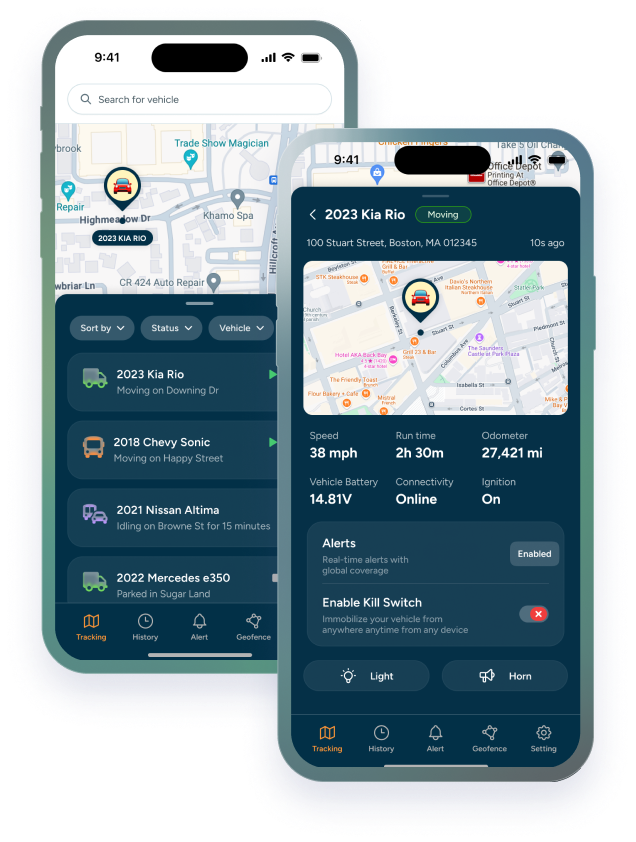GPS technology has revolutionized how we keep track of items, vehicles, and even people. From ensuring the safety of valuable assets to optimizing fleet management, GPS trackers have become indispensable tools in various sectors. A common question that arises with the use of GPS tracking devices is, “How far can a GPS tracker work?” This article delves into the workings of GPS trackers, the factors influencing their range, and tips for extending their effectiveness for reliable tracking.
The Basics of GPS Tracking
At the core of GPS tracking is the Global Positioning System (GPS), a network of about 30 satellites orbiting the Earth. GPS devices, including GPS trackers, communicate with these satellites to determine the location of the device in real-time. Unlike traditional radio frequency (RF) tracking devices, which have a limited range and require a line of sight, GPS trackers can provide global coverage. This capability is because the GPS signal transmitted by satellites can reach any part of the Earth’s surface, given there is an unobstructed path between the satellite and the GPS device.
How Far Can a GPS Tracker Work?
The simple answer is that the range of a GPS tracker is virtually limitless on the surface of the Earth. As long as the GPS tracker can receive signals from at least four satellites, it can accurately determine its location, speed, and direction. This global coverage makes GPS trackers work in almost any location worldwide, from remote wilderness areas to dense urban environments.
However, the “range” of a GPS tracker isn’t about how far from the Earth it can be and still function; it’s more about the conditions under which it can receive a clear GPS signal. The effectiveness of GPS tracking can be influenced by several factors:
- Obstructions: Natural and man-made obstructions like buildings, trees, tunnels, and mountains can block or interfere with GPS signals.
- Atmospheric Conditions: Severe weather conditions can slightly affect the accuracy of GPS signals.
- Indoor Use: GPS signals can have difficulty penetrating deep into buildings, underground facilities, or underwater, which can limit the effectiveness of GPS tracking in such environments.
Extending the Range and Reliability of GPS Trackers
While the range of GPS trackers is inherently extensive thanks to satellite coverage, ensuring reliable and accurate tracking involves optimizing the conditions under which they operate. Here are some tips for extending the effectiveness of your GPS tracking:
- Optimal Placement: For vehicle tracking, ensure the GPS tracker is placed in a location with minimal obstructions to the sky, such as the dashboard or near windows. For assets, consider the likely routes of transport and storage conditions.
- Use Assisted GPS (A-GPS): A-GPS uses not only the GPS satellites but also cell tower data to improve startup performance and tracking accuracy, especially in urban areas or places with an obstructed sky view.
- Maintain a Clear Line of Sight: Whenever possible, reduce barriers between the GPS tracker and the open sky to ensure a strong GPS signal.
- Leverage High-Quality Devices: Invest in high-quality GPS tracking devices with robust signal processing capabilities to enhance tracking accuracy and reliability.
Factors That Define the Range of a GPS Tracker
Understanding the technical aspects of GPS tracking can further clarify how these devices work and their operational range:
- Satellite Visibility: A GPS tracker needs signals from at least four satellites to accurately triangulate its position. The more satellites in view, the better the accuracy.
- Signal Strength: The strength of the GPS signal can vary based on the tracker’s environment. Devices designed to amplify weak signals can perform better in challenging conditions.
The Role of Trackhawk GPS in Extending GPS Tracking Capabilities
Trackhawk GPS offers advanced GPS tracking solutions that incorporate the latest technologies to ensure reliable tracking even in the most challenging environments. By utilizing A-GPS and integrating features that help manage obstructions and atmospheric conditions, Trackhawk GPS devices are designed to provide accurate real-time location data for your valuable assets and fleets.
Conclusion: Maximizing GPS Tracker Effectiveness
The question of how far a GPS tracker can work is less about distance and more about signal accessibility and environmental conditions. By understanding the principles of GPS technology and taking steps to optimize tracking conditions, you can maximize the effectiveness of your GPS tracking devices. Whether you’re managing a fleet of commercial trucks, keeping track of valuable assets, or ensuring the safety of loved ones, GPS trackers offer a reliable solution with a global reach. With the right practices and technology, like that provided by Trackhawk GPS, you can ensure that your tracking needs are met with precision and reliability, no matter where your assets might be.

Comments